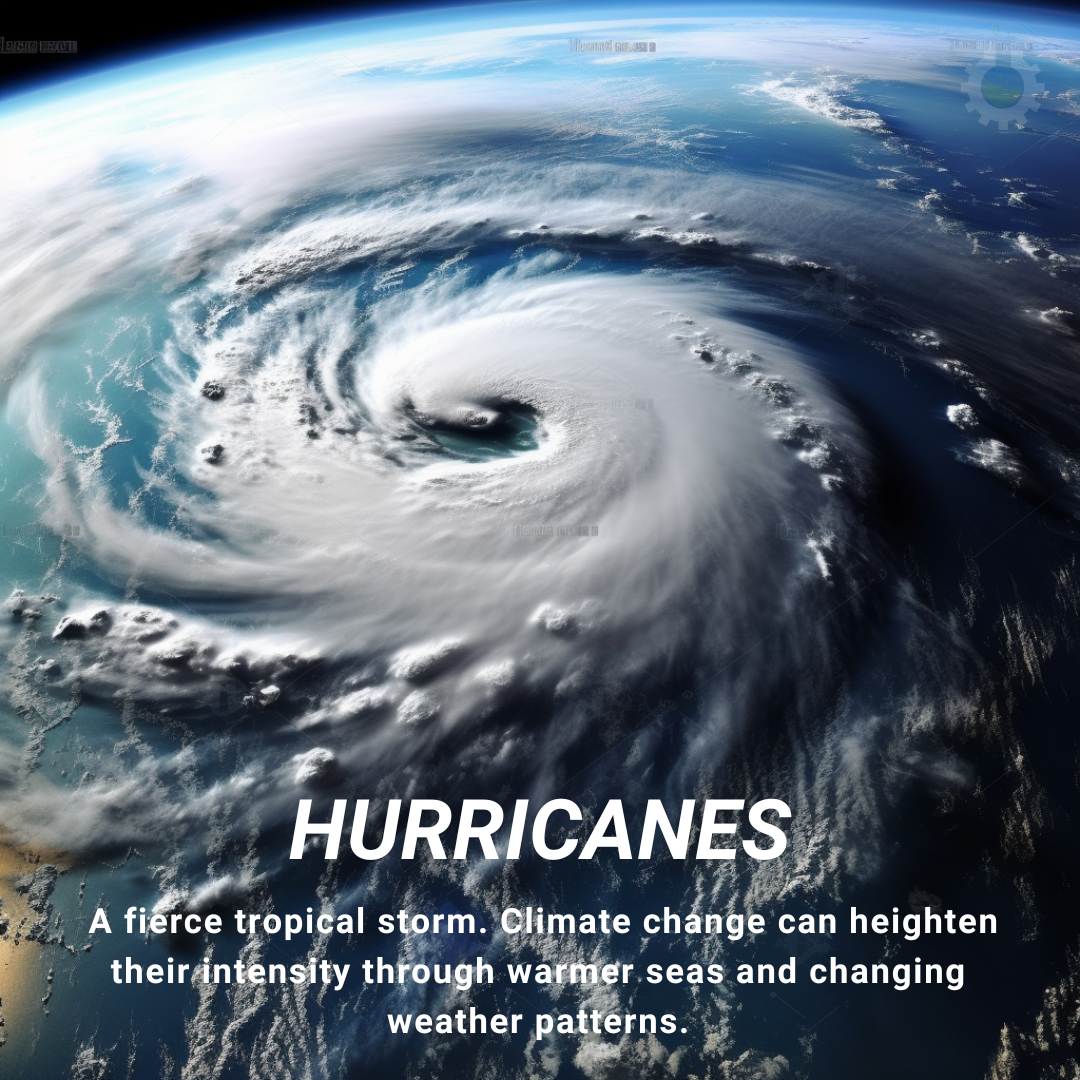September 1, 2023
Climate Change Poster Collection of the Day – Hurricanes
Book a Demo
Today’s Climate Change Poster Collection features Hurricanes, also known as tropical cyclones, are one of nature’s most powerful and destructive forces. These mammoth storm systems take shape over warm ocean waters, marked by their spiraling arrangement of thunderstorms, strong winds, and torrential rain. As they gather strength, they can cause widespread devastation, their impacts felt across vast stretches of land.
These tropical cyclones are categorized using the Saffir-Simpson Hurricane Wind Scale. The scale ranges from 1 to 5 and is based on the wind speed of the storm. On this scale, a category 5 hurricane, with the highest wind speed, is the most destructive. The damage inflicted by these storms can be catastrophic due to their size and strength. They can unleash massive destruction through their strong winds, heavy rain, and storm surges, leading to severe flooding and landslides.
The nomenclature for these storm systems varies depending on their location. They are known as hurricanes in the Atlantic and eastern Pacific Oceans, referred to as typhoons in the Pacific Ocean, and named cyclones in the Indian Ocean. However, regardless of the name, they all share the same formidable nature.
The National Oceanic and Atmospheric Administration (NOAA) plays a crucial role in tracking and predicting the path and strength of these storms. They employ a range of tools such as weather satellites, radar, hurricane-tracking aircraft, buoys, and sophisticated computer models. This information is vital in preparing for the onset of a storm and mitigating its potential damage.
Hurricane seasons, times of the year when these storms are most likely to form, vary depending on the region. The Atlantic hurricane season, for example, runs from June 1st to November 30th, while the Eastern Pacific hurricane season starts slightly earlier on May 15th and also ends on November 30th.
Education about hurricanes and their safety measures is of paramount importance, particularly for residents living in areas prone to these natural disasters. NOAA spearheads this initiative by providing resources and programs to educate the public on hurricane preparedness and safety.
Interestingly, the energy that fuels these tropical cyclones comes from the evaporation of water from the ocean surface. This water vapor condenses into clouds and rain when the moist air rises and cools to saturation. This process is what gives these storms their power and what makes them a force to be reckoned with.
Understanding hurricanes and the destruction they can cause is a critical aspect of living in areas that are susceptible to their impact. As they continue to pose a significant threat to coastal communities worldwide, education and preparedness remain our best defense against these potent forces of nature.
Discover an inspiring collection of climate change posters.



